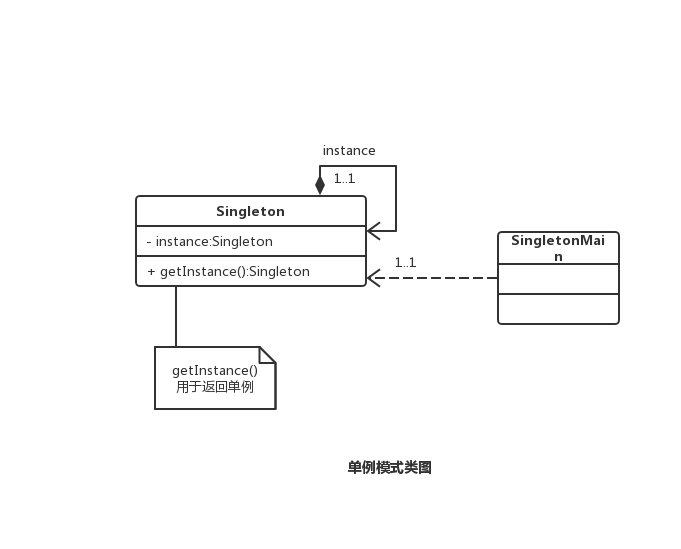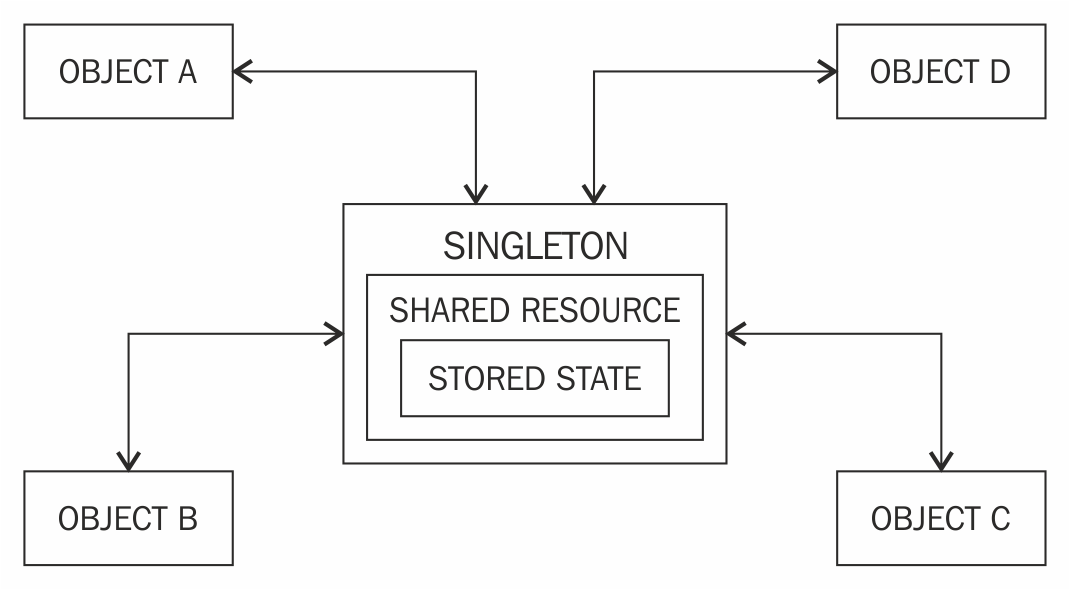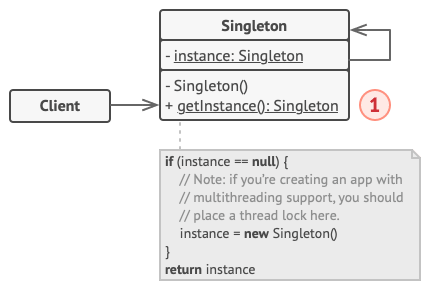A pattern is a recurring solution to a problem in a context. Singletons make it very hard to move from them to regular objects.
The main disadvantage of this is method is that using synchronized every time while creating the singleton object is expensive and may decrease the performance of your program.

. According to our Gang of Four the singleton pattern offers controlled access to a sole instance is more flexible than class. If you want to eliminate the singleton mode because of the deserialization and reflection mechanism you can use the enumeration singleton writing method but the disadvantage is that this writing method is readable and difficult to maintain. In other words it restricts the instantiation of a class to one object.
Any change in the global object will impact all other classes using it. The major drawbacks of using singleton design pattern are. Session and WidgetKit classes in the InterViews user interface toolkit.
The Singleton Software Design Pattern is one of many patterns or templates used to address common problems found in software design. This type of design pattern comes under creational pattern as this pattern provides one of the best ways to create an object. Answered Oct 18 2019 by rajeshsharma.
The Gang of Four lists several other known uses of Singleton patterns including Changeset current in SmallTalk-80 and the. The singleton object is exposed globally and is available to a whole application. Singletons hinder unit testing.
Critics consider the singleton to be an anti-pattern in that it is frequently used in scenarios where it is not beneficial because it often introduces unnecessary restrictions in situations where a singleton class would not be beneficial thereby introducing global state into an application. What is a common criticism of the Singleton design pattern. Singleton is a part of Gang of Four design pattern and it is categorized under creational design patterns.
When multiple parallel threads access the same instance at the same time to get an instance of a singleton logger there may be a concurrency conflict on creating an instance and violating the singleton pattern. We made our class final to be able to prevent inheritance and allow multiple instances of the same object that initially is considered singleton. Rather than simply include a snippet of source code and call my blog post complete I will leave it to the reader to review the code for the Singleton pattern if she so desires.
The major drawbacks of using singleton design pattern are. It deals with object creation mechanisms. The singleton object is exposed globally and is available to a whole application.
Thus classes using this object become tightly coupled. The Singleton pattern can mask bad design for instance when the components of the program know too much about each other. In this article we are going to take a deeper look into the usage of the Singleton pattern.
That can be simplified if you wrap all them into a. Singleton pattern is one of the simplest design patterns in Java. The below code defines the singleton code for Logger that is thread-safe.
Singleton design pattern is breaking SOLID approach specifically the O which stands for openclose principle A class is considered open if we are able to inherit from it. The pattern requires special treatment in a multithreaded environment so that multiple threads wont create a singleton object several times. The criticisms for the most part fall into two categories.
Singletons create hidden dependencies. However if performance of getInstance is not critical for the application this method provides a clean and simple solution. Application configuration common constants and other values that do not change frequently can be shared as single.
The argument they make is it creates more problem than it solves. Since developers may have used. The main disadvantage of this is method is that using synchronized every time while creating the Singleton object is expensive and may decrease the performance of your program.
Few of the common use cases for the singleton design pattern are as follows. ASingleton causes code to be tightly coupled. Also its too easy to write a non-thread-safe singleton.
Some Jedi of Software Engineering consider Singleton design pattern as an Anti-Pattern. Singleton Design Pattern Eager Initialization Java In the eager initialization the Singleton class is created when the class is loaded. A second common use of this class is in updating old code to work in a new architecture.
This is the easiest way to create a singleton class but it has a drawback even if the client application may. Thus classes using this object become tightly coupled. Rather than using singletons you should pass all the needed utility objects from function to function.
What is the common criticism of Singleton design pattern. This pattern involves a single class which is responsible to create an object while making sure that only single object gets created. Design Patterns in the object-oriented world is a reusable solution to common software design problems that occur repeatedly in real-world application development.
As the Singleton is readily available throughout the code base it can be. It is a template or description of how to solve problems that can be used in many situations. It is one of the most simple design patterns in terms of the modelling but on the other hand this is one of the most controversial patterns in terms of complexity of usage.
Once you have learned to recognize a design pattern you will begin to. The singleton pattern is creational. However if performance of getInstance is not critical for your application this method provides a clean and simple solution.
Any change in the global object will impact all other classes using it. The Singleton Design Pattern is quite helpful for application configurations as configurations may need to be accessible globally and future expansions to the application configurations can be consolidated at single place. The singleton pattern ensures that a class only has one instance and provides a global point of access to it.
A Singleton might cause issues for writing testable code if the object and the methods. When multiple parallel threads access code at the same time to get an instance of. Several singleton design patterns mentioned earlier will regenerate objects under the mechanism of deserialization and reflection.
A single instance of the logger can be created and used across the application to write log information into the same file. The restriction of having only one object of the class is unnecessary and it makes the object global accessible from anywhere in the application. Critics consider the singleton to be an anti-pattern in that it is frequently used in scenarios where it is not beneficial because it often introduces unnecessary restrictions in situations where a singleton class would not be beneficial thereby introducing global state into an application.
ASingleton causes code to be tightly coupled.

Java Design Pattern Optimization Singleton Pattern

Design Patterns That I Often Avoid Singleton Infoworld

Let S Examine The Pros And Cons Of The Singleton Design Pattern By Navdeep Singh We Ve Moved To Freecodecamp Org News Medium

What Are Drawbacks Or Disadvantages Of Singleton Pattern Stack Overflow

Let S Examine The Pros And Cons Of The Singleton Design Pattern




0 komentar
Posting Komentar